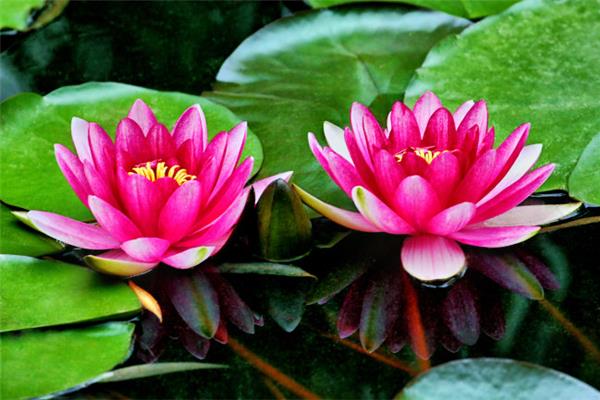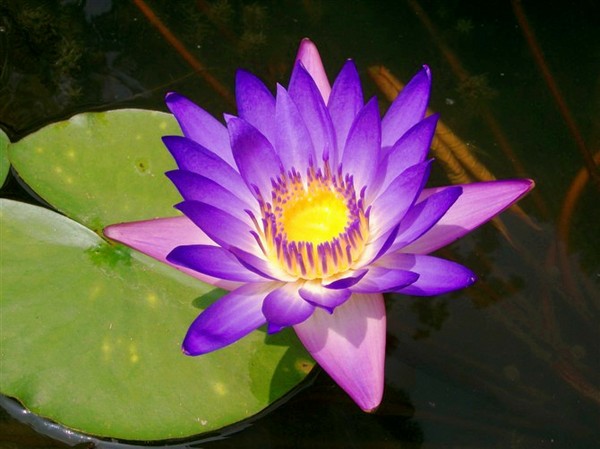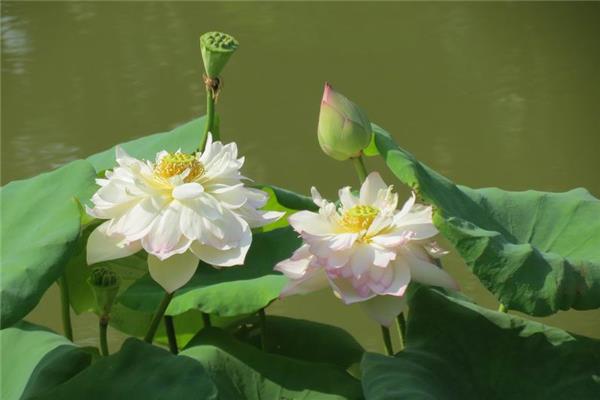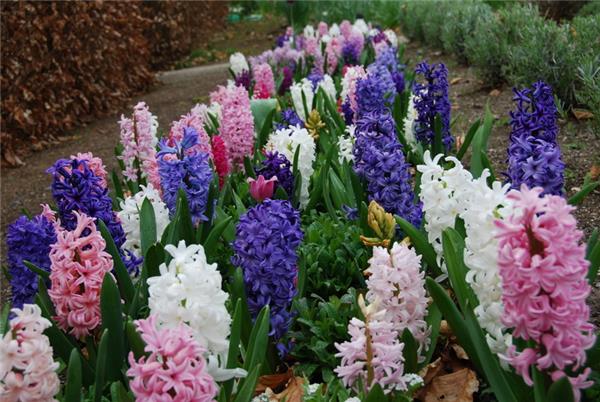What are the common types of aquatic flowers
Aquatic flowers are generally quieter and look cleaner and tidy. And there are many kinds of aquatic flowers, and now many can be used for home breeding.

I. the difference between aquatic flowers and terrestrial flowers
Terrestrial plants must have well-developed roots in order to absorb water and nutrients from the soil. In order to support the body, it is easy to transport nutrients and water with strong stems. Both roots and stems are covered with thick epidermis to prevent the loss of water. Aquatic plants are surrounded by water and do not need a thick epidermis to reduce the loss of water, so the epidermis becomes extremely thin and can absorb water and nutrients directly from the water. In this way, the root loses its original function, making the root of the aquatic plant underdeveloped. The roots of some aquatic plants do not absorb water and nutrients, but are mainly used for fixation. Plants that can grow in water are collectively referred to as aquatic plants. In a broad sense, aquatic plants include all marsh, submerged or floating plants. According to the depth of water needed for the vigorous growth of plants, aquatic plants can be further subdivided into deep-water plants, floating plants, aquatic plants, marsh plants or moisture-loving plants.

Common species of aquatic flowers
Water lilies: water lilies, also known as meridian lilies and water celery flowers, are plants of the family Ranunculaceae. Perennial aquatic herbs; rhizome thickening. The leaves of water lilies are round or ovate, with curved, heart-shaped or arrow-shaped bases, often without water leaves; submerged leaves are thin and fragile. Flowers large, beautiful, floating or above water; sepals nearly free; petals white, blue, and pink. Water lilies like sunshine and are well ventilated, so tropical and hardy water lilies that bloom during the day close at night and bloom again in the morning. Born in ponds and lakes, it is often cultivated in the pools of some parks.
Lotus: Lotus, also known as lotus, water hibiscus, etc., belongs to the order Nelumbo nympha, lotus family perennial aquatic herbaceous flowers. The underground stem is long and thick, with long nodes and round leaves. The florescence is from June to September, solitary at the top of the pedicel with many petals. There are also many kinds of lotus, here is mainly introduced is the appreciation of the lotus, the lotus has been the theme of poets singing and painting through the ages. Lotus is not only an aquatic flower plant for many years, but also an aquatic herb, which is root-like, very thick, with most stomata, pedicels and petioles of the same length, flowers born on the top of the pedicel, high above the surface of the water, flowers 10-20 meters in diameter, beautiful and fragrant.

Goldfish algae: goldfish algae grow in the still water of small lakes for many years. It has been common in ponds, ditches and other places. It can be used as feed for pigs, fish and poultry. The whole herb is used as medicine, which can be picked and dried in the four seasons. Goldfish algae also has a great efficacy: the main treatment of blood fever hematemesis, hemoptysis, heat and astringent pain. All over the world. Goldfish algae is a perennial submerged herb. Its flowers are about 2 mm in diameter; bracts 9-12, striate, 1.5-2 mm long, light green, transparent, apex with 3 teeth and purplish hairs; stamens 10-16, densely packed, ovary ovate, style subulate.
Rich bamboo: Liliaceae dragon blood tree is an evergreen erect shrub, suitable for indoor water flowers. The leaves of Fugui bamboo are green, the color is dark green, and the stems are straight and round like bamboo. Leaves ovate, apex pointed, petiole base clasping. It is a very shade-tolerant plant and can still grow well, tall and straight and strong under weak light conditions. Can be placed indoors for a long time to watch, do not need special maintenance, as long as there is enough water, can exuberant growth. In hydroponic culture, the stem of Fugui bamboo was cut into small segments of more than 20 cm as cuttings in water, and as long as the cuttings were soaked in water, they could take root and survive.
"Magnolia: perennial evergreen perennial herbaceous flowers of the family Liliaceae, having clusters of leaves, linear, with longitudinal yellow-and-white stripes on the edges or in the middle." In summer and autumn, slender, flexible and drooping stolons are drawn from the leaves, tender leaves and aerial roots germinate at the top or nodes, and white flowers bloom. The orchid can be raised in indoor water, which can not only purify the air, but also has the advantages of beautiful appearance and simple management. Just dig out the potted orchid, remove the soil from the root, cut off the old root and rotten root, leave the fibrous root, put it in a container bottle, fill the bottle with water and flower nutrient solution, and let the root grow in water.
Hyacinth: hyacinth, also known as Narcissus, belongs to the hyacinth genus of Liliaceae, perennial herbs. The bulb is spherical or oblate, the outer coat flag is purplish blue or white, etc., the leaf is basal, the leaf blade is thick, banded lanceolate. Flower stem extracted from the middle of the leaf stem, raceme, flower appearance delicate, colorful, dazzling, pleasant fragrance. Sex likes a sunny and cool and humid environment, and it is suitable for pot cultivation. If you want to raise the water, put the bulb in the hydroponic nutrient solution, the appearance is clean, the ornamental is strong!

Because of the lack of soil choice and operation, aquaculture is much simpler and cleaner than soil-grown flowers, so if you are interested, you can give it a try.
Related
- Wuhan Hospital Iron Tree Blooming Result Was Instantly Frightened by the Gardener Master
- Which variety of camellia is the most fragrant and best? Which one do you like best?
- What is the small blue coat, the breeding methods and matters needing attention of the succulent plant
- Dormancy time and maintenance management of succulent plants during dormancy
- Minas succulent how to raise, Minas succulent plant pictures
- What are the varieties of winter succulent plants
- How to raise succulent plants in twelve rolls? let's take a look at some experience of breeding twelve rolls.
- Attention should be paid to water control for succulent plants during dormant period (winter and summer)
- Watering experience of twelve rolls of succulent plants
- Techniques for fertilizing succulent plants. An article will let you know how to fertilize succulent plants.



